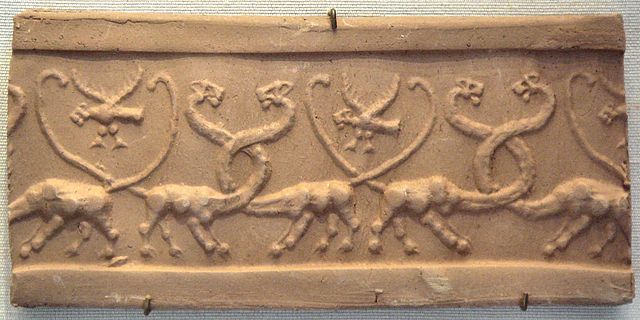Confronted animals, or confronted-animal as an adjective, where two animals face each other in a symmetrical pose, is an ancient bilateral motif in art and artifacts studied in archaeology and art history. The "anti-confronted animals" is the opposing motif, with the animals back to back.
The Gebel el-Arak Knife. The reverse of the handle shows a Master of Animals motif: two confronted lions, flanking a central figure (note confronted dogs and other animals below)
Cylinder seal of Uruk displaying a confronted-lioness motif sometimes described as a "serpopard" - 3000 BC - Louvre
Minoan snake goddess figurine from Crete, holding confronted snakes, dated 1600 BC.
Narmer Palette with confronted lionesses, displayed in iconographic registers - Ancient Egypt c. 3,000 BC
In art and iconography, a motif is an element of an image. Motifs can occur both in figurative and narrative art, and in ornament and geometrical art. A motif may be repeated in a pattern or design, often many times, or may just occur once in a work.
Composite capital whose design includes acanthus leaf, and volute motifs
Saint Joseph sleeps through the Nativity, Cloisters Apocalypse, c. 1330
Gebel el-Arak Knife with Master of Animals motif at the top of the handle
12th century sheela na gig on the Church, at Kilpeck (England)








